The book under review this week is Open Design Now: Why Design Cannot Remain Exclusive, edited by Bas van Abel (Creative Director of Waag Society), Roel Klaassen (Programme Manager at Premsela, Dutch Platform for Design and Fashion), Lucas Evers (Head of Programme Culture at Waag Society and member of Creative Commons Netherlands) and Peter Troxler (independent researcher and concept developer.) You can find it on amazon USA or UK.
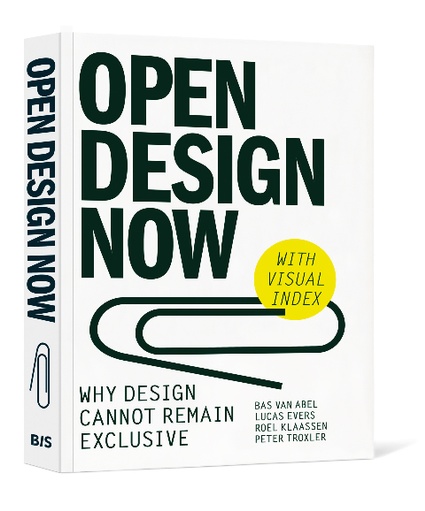 BIS publishers writes: In design(ing) there is a revolution ongoing that is triggered by an emerging networked community that is sharing digital information about physical products and the ubiquitous availability of production tools and facilities. It transforms design into an open discipline, in which designs are shared and innovation of a large diversity of products is a collaborative and world spanning process.
BIS publishers writes: In design(ing) there is a revolution ongoing that is triggered by an emerging networked community that is sharing digital information about physical products and the ubiquitous availability of production tools and facilities. It transforms design into an open discipline, in which designs are shared and innovation of a large diversity of products is a collaborative and world spanning process.
Open Design Now covers these issues:
Overview of Open Design: practices, tools, licensing systems
As Open Design is a way of designing everyone can participate in, what are emerging practices that facilitate it? what are the tools, existing and needed, to make it happen (physical tools, digital tools, legal tools)?
Underlying principles of Open Design:
Networked tools for distributed physical production, the understanding of the commons as an elementary resource for cultural production, etc.
Implications of Open Design:
What effect does Open Design have on designing, artistic expression and creative processes? on the relationship of producer and consumer? on design business? on society at large?
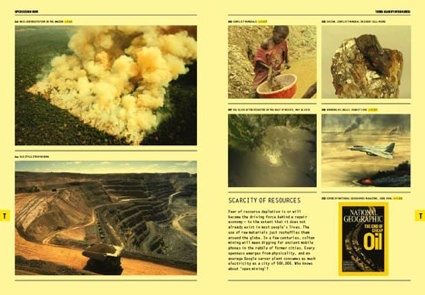
You might remember that I’ve already said a few words about Open Design Now in early June when it was launched at DMY International Design Festival Berlin. I hadn’t read the book at the time. I have now.
The book is divided into three main sections. The first one is made of some 210 pages of essays by practitioners and thinkers such as John Thackara, Dick Rijken from STEIM and professor at The Hague University, Bre Pettis of the MakerBot fame, Renny Ramakers from Droog Design, Tommi Laitio from Demos Helsinki. The section of essays is followed by a stimulating list of case studies that range from the Fifty Dollar Leg Prosthesis to Fritzing and the RepRap digital fabrication system. The last part is the ‘visual index’ made of examples over examples of inspirational works and ideas: guerrilla gardening, bamboo bikes, hacker strategies, recycling initiatives, manifestos, grassroots inventions, etc.
The authors of the book announce right from the start that they won’t try and reduce open design to a definition. What they do instead is provide a clear snapshot of the state of open source design in all its guises. Van Abel, Evers, Klaassen and Troxler did also a great job at editing a book that provides a solid framework for discussion as well as plenty of opportunities to reflect and ponder on the opportunities and challenges offered by open source values on the whole spectrum of creativity, from chair marketing to robot making.
In their essays, the contributors explore with more depth many of the issues that the design community might prefer to ignore right now: shifts in the distribution and production process, ‘loss’ of control, adjustments of intellectual property rights, reassessment of old hierarchies, access to knowledge, definition of ‘design literacy’, impact of new technologies and tools, the hybridization of the designer’s role, the designer-client relationship is under (re)evalution… And most crucially for some, the business potential of open source creativity.
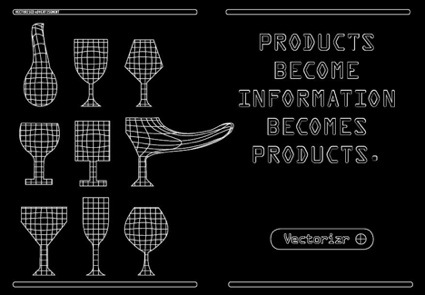 Joris Laarman‘s point of view is one of the highlights of the book. The designer (and one of the initiators of Make-Me.com) raises thought-provoking questions about the ‘mediocracy of the middle classes’ that dominates the current mass production design, about why true modernists wanted open source design 100 years ago, how the power could get out of the grasp of multinationals and back into the hands of craftspeople whose know-how and talent had been rendered irrelevant by industrialization, why creative commons licensing shouldn’t prevent you from making profit, etc.
Joris Laarman‘s point of view is one of the highlights of the book. The designer (and one of the initiators of Make-Me.com) raises thought-provoking questions about the ‘mediocracy of the middle classes’ that dominates the current mass production design, about why true modernists wanted open source design 100 years ago, how the power could get out of the grasp of multinationals and back into the hands of craftspeople whose know-how and talent had been rendered irrelevant by industrialization, why creative commons licensing shouldn’t prevent you from making profit, etc.
Another great input is Mushon Zer-Aviv‘s essay “Learning by Doing”, a very personal and often humourous account of the strategies he deployed in his efforts to teach open design in art and design schools.
Finally, and mostly because it gives me the opportunity to highlight the breadth of the book, i’d like to single out Open Design for Government, an essay in which Bert Mulder calls for applying some of the tools, frameworks and values of open design to governmental institutions in order to open up policy making to citizens.
Before i close this post, i should mention the very brave and befitting publication model. BIS publishers is making the content of the book gradually available on the Open Design Now website. Right now, 15% of the content can be read online.
Views inside the book:
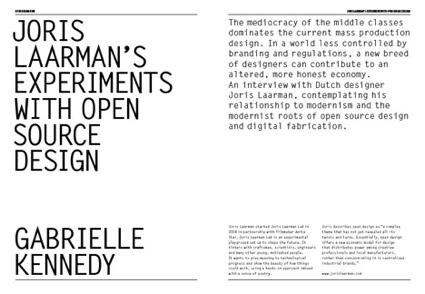
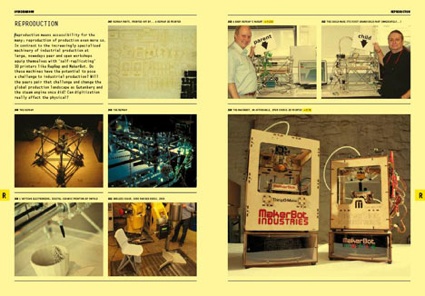
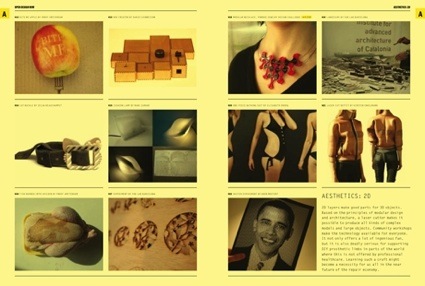
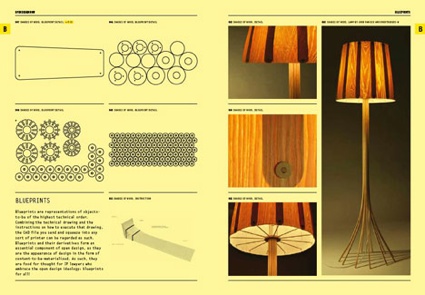 Open Design Now is a collaborative effort of Creative Commons Netherlands, Premsela, Dutch Platform for Design and Fashion and Waag Society. It was designed by Hendrik-Jan Grievink.
Open Design Now is a collaborative effort of Creative Commons Netherlands, Premsela, Dutch Platform for Design and Fashion and Waag Society. It was designed by Hendrik-Jan Grievink.
Image on the homepage: ÖLKE BÖLKE by Remy&Veenhuizen. Photo: Leo Veger.
